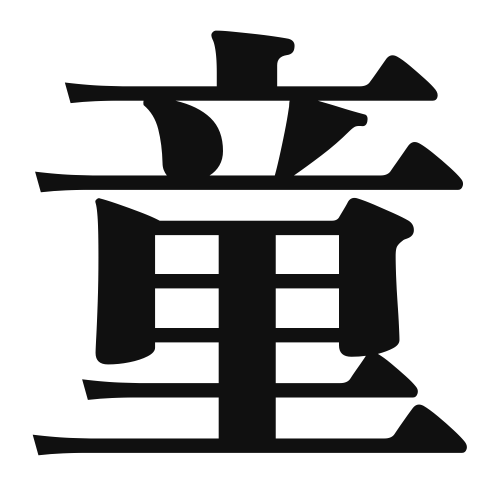1. Overview of Meaning
The kanji “童” (pronounced “dō” in Japanese) primarily means “child” or “youth.” It is often associated with innocence and playfulness, representing the early stages of life.
2. Formation and Radical
The kanji “童” is a phonetic-ideographic character, which means it combines both meaning and sound elements. The left part of the character is the radical “亻” (which indicates a person), while the right part “童” contributes to the phonetic aspect.
The radical “亻” is commonly found in kanji related to people, emphasizing the human aspect of the character.
3. Examples of Usage
Common words and phrases that include “童” are:
- 童話 (どうわ, dōwa) – fairy tale
- 童心 (どうしん, dōshin) – childlike spirit
Example sentence in daily conversation:
「彼は童心を忘れない人です。」(かれはどうしんをわすれないひとです。) – “He is a person who never forgets his childlike spirit.”
4. Synonyms and Antonyms
Similar kanji with related meanings include:
- 子 (こ, ko) – child (more general term)
- 少年 (しょうねん, shōnen) – boy (referring to a young male)
Antonyms include:
- 老 (ろう, rō) – old (referring to age)
5. Cultural and Historical Background
The kanji “童” has significant ties to Japanese culture, often appearing in literature and folklore. It embodies the essence of childhood, which is celebrated in various forms of art and storytelling.
Proverbs and idiomatic expressions that include “童” often reflect the values of innocence and purity associated with youth. For example, the phrase “童心に帰る” (どうしんにかえる, dōshin ni kaeru) means “to return to a childlike heart,” emphasizing the importance of maintaining a sense of wonder and joy throughout life.
